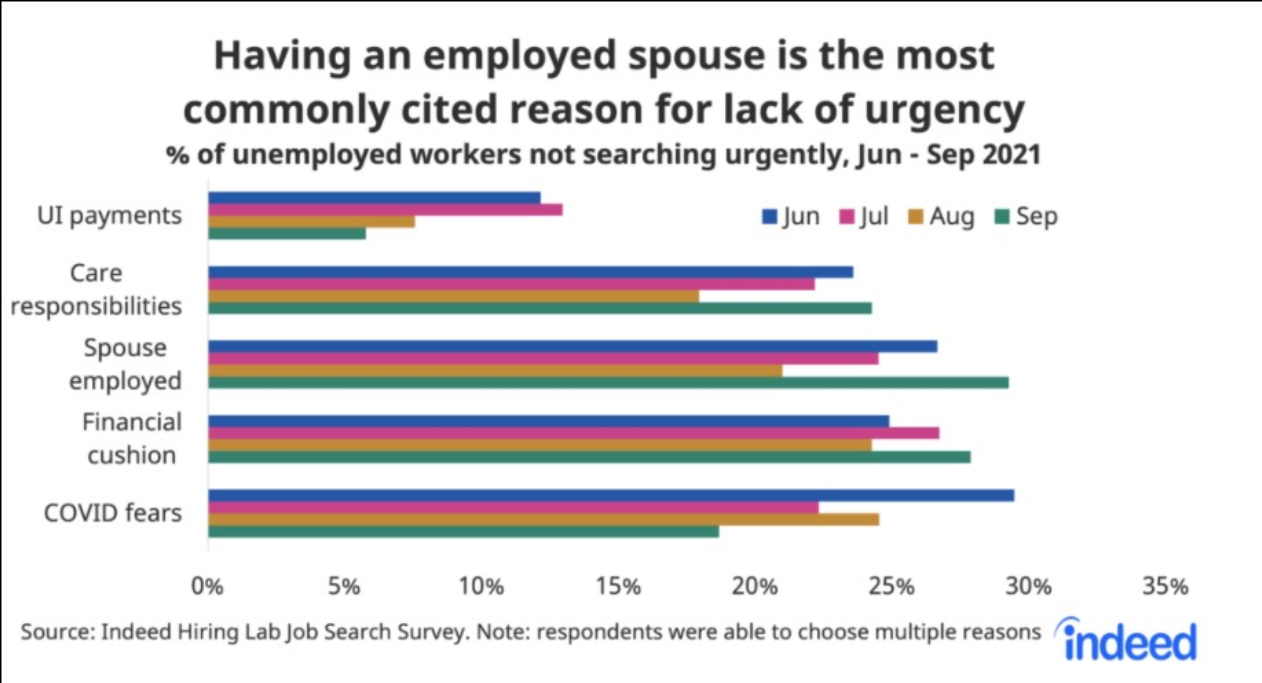Unless you’ve been living in a cave for the past two years, you’ve undoubtedly encountered inconveniences due to staff shortages. Whether it is your favorite restaurant closing for a few days each week, or a store you frequent that never seems to have enough employees to help customers, it’s happening everywhere. And it doesn’t show signs of getting any better soon. How can this be, you ask? After all, the economy is rolling along, the markets continue to perform well, wages are going up, and unemployment benefits from COVID layoffs have ceased. So why aren’t people coming back to the workforce? To answer the question, we did a deep dive on what’s causing these shortages to help you understand it and hopefully offer some clues to when it might ease.
More than a year and a half into the pandemic, the US is still missing about 4.3 million workers. That’s how much bigger the labor force would be if the Labor Participation Rate – the share of the population 16 and older either working or looking for work – returned to its February 2020 level of 63%. (It’s around 61% today.) Workers are quitting at near-record rates in manufacturing, retail, transportation, and professional and business services. An October 15th Wall Street Journal article cites several reasons:
- Daycare centers, short of workers, are turning away families. The number of people employed in child-care is down more than 10%, and child-care costs are rising. As a result, some parents choose to stay home and live on one (rising) income versus two.
- Many baby boomers who are close to retirement are adjusting their spending and choosing early retirement.
- Workers in leisure and hospitality (think restaurants, hotels, etc.) are moving up the job chain to higher-paying positions. For instance, Amazon will pay you $18 per hour to work in their warehouse, plus pay for your college tuition. That looks far better than the dishwashing job at your local chain restaurant.
- For some, fears of COVID remain a deterrent.
This chart published by indeed.com reflects some of the reasons people are not flocking back to the workforce.

Some economists are concerned that these worsening worker shortages reflect longer-term shifts and suggest these shortages won’t go away anytime soon. We see business adjusting for the long haul. For instance, many hotels currently don’t offer daily room service unless requested. Retail and grocery stores are adding self-checkout capabilities in droves, and restaurants are converting to self-serve options. Instead of a server, you’ll place your order online, and a runner will bring you your meal to your table.
Like it or not, many of these changes appear to be here to stay. This may be the new normal – at least for a while.

